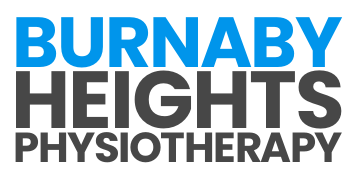
Supporting Acupuncture with Daily Habits: Lifestyle, Nutrition, Exercise, and More
September 15, 2025
The Role of Education in Physiotherapy Success: Learning to Recover
October 15, 2025Navigating the world of physical health can be challenging, especially when distinguishing between different therapeutic options like physiotherapy and massage therapy. Each offers unique benefits, tailored to specific needs and goals. Understanding the differences between physiotherapy and massage is key to making informed decisions about personal health strategies. In this blog, we will explore the treatment philosophies, techniques, and effectiveness of physiotherapy and massage therapy, helping you determine which approach best suits your needs.
What Is The Difference in Treatment Philosophy Between Physiotherapy And Massage Therapy?
Physiotherapy and massage therapy differ significantly in their treatment philosophies. Physiotherapy is often centered around functional recovery and improving mobility, using techniques aiming at the mechanical and structural aspects of the body. In contrast, massage therapy tends to focus on stress relief and muscle relaxation. Both disciplines have distinct approaches to achieving health objectives.
| Functional Recovery | Physiotherapy prioritizes restoring physical function and improving mobility. It often involves structured exercise programs and manual therapy techniques designed to address specific physical limitations. |
| Muscle Relaxation | Massage therapy emphasizes relaxation and reducing muscle tension. It uses various techniques like Swedish massage to promote relaxation and stress reduction. |
| Holistic Approach | Physiotherapy often adopts a holistic view by considering the entire musculoskeletal system and how it contributes to pain or dysfunction. |
| Specificity in Treatment | Massage therapy often targets specific muscle groups to alleviate tension and improve circulation, focusing more on immediate comfort rather than long-term structural changes. |
| Preventative Measures | Physiotherapy includes preventative strategies to avoid injury recurrence, emphasizing client education and self-management strategies. |
| Stress Reduction | Massage therapy is renowned for its stress-relieving benefits, which can indirectly contribute to better physical health by lowering cortisol levels and improving mood. |
In brief, physiotherapy focuses on improving physical function and preventing future issues, whereas massage therapy provides immediate relief and relaxation.
How Do the Techniques Between Physiotherapy And Massage Therapy Differ?
The techniques used in physiotherapy and massage therapy differ in purpose and execution. Physiotherapy employs a broad range of techniques, including exercise prescription and manual therapy, to address functional impairments. Conversely, massage therapy utilizes specific massage techniques to relieve tension and improve circulation.
- Exercise Prescription: Physiotherapy involves exercise programs tailored to enhance strength, flexibility, and endurance, targeting specific areas of dysfunction.
- Manual Therapy: This includes joint mobilization and manipulation techniques used by physiotherapists to improve joint function and reduce pain.
- Soft Tissue Techniques: Massage therapy focuses on manipulating soft tissues to alleviate tension and promote relaxation, often using methods like kneading and friction.
- Modalities Use: Physiotherapy may use modalities such as shockwave therapy or heat therapy to aid recovery and reduce pain.
- Trigger Point Therapy: Massage therapy often incorporates trigger point therapy to target knots in muscles, providing relief from chronic tension.
- Postural Education: Physiotherapists often provide education on proper posture and body mechanics to prevent further injury.
Overall, physiotherapy techniques are more varied and aim at rehabilitation and prevention, whereas massage therapy focuses on relaxation and immediate muscle relief.
Is There Scientific Evidence to Support the Effectiveness of Both Treatment Approaches?
Yes, scientific evidence supports the effectiveness of both physiotherapy and massage therapy, though the focus areas differ. Research indicates that physiotherapy is effective for functional recovery and rehabilitation. It often involves evidence-based practices that address musculoskeletal issues, with numerous studies supporting its role in improving mobility and reducing pain. Massage therapy also has a substantial body of evidence highlighting its benefits in reducing stress and muscle tension. Studies have shown that regular massage can lead to decreased levels of cortisol, the stress hormone, and increased levels of serotonin and dopamine, which contribute to improved mood and relaxation. While physiotherapy’s effectiveness is often evaluated through measurable functional improvements, massage therapy’s benefits are frequently assessed through subjective measures of stress reduction and well-being.
In summary, both physiotherapy and massage therapy have strong evidence backing their effectiveness, though they cater to different health needs and outcomes.
When Should You Choose Physiotherapy Over Massage?
Choosing physiotherapy over massage depends on specific health goals and needs. Physiotherapy is ideal for those seeking recovery from injuries, improving mobility, or addressing chronic pain. It offers structured programs tailored to enhance physical function and prevent future issues.
- Injury Rehabilitation: If you’ve sustained an injury, physiotherapy can help restore movement and function through targeted exercises and manual therapy.
- Chronic Pain Management: For chronic conditions like arthritis, physiotherapy provides strategies to manage pain and improve quality of life.
- Mobility Improvement: Physiotherapy is beneficial for enhancing mobility and flexibility, particularly in individuals with movement restrictions.
- Post-Surgical Recovery: After surgery, physiotherapy can assist in regaining strength and movement, reducing recovery time.
- Preventative Care: Physiotherapists offer education on injury prevention and self-management strategies to maintain long-term health.
- Neurological Conditions: Conditions such as stroke or multiple sclerosis can benefit from physiotherapy, which focuses on improving motor function and independence.
In summary, physiotherapy is the preferred choice for addressing functional impairments, improving mobility, and aiding in recovery from injuries or surgery.
When Should You Choose Massage Over Physiotherapy?
Massage therapy is best chosen when the primary goal is relaxation, stress reduction, or relief from muscle tension. It offers immediate benefits in terms of comfort and relaxation.
- Stress Reduction: If stress and anxiety are impacting your daily life, massage can be an effective tool for relaxation and mental well-being.
- Muscle Tension Relief: For those experiencing tight or sore muscles, massage therapy can alleviate tension and promote relaxation.
- Improving Circulation: Regular massage can enhance blood flow, supporting the delivery of nutrients to tissues and promoting recovery.
- Post-Exercise Recovery: After intense physical activity, massage can help reduce muscle soreness and speed up recovery.
- Headache Relief: Massage therapy can alleviate tension headaches by reducing muscle tension and promoting relaxation.
- Enhanced Sleep Quality: Many people find that regular massage sessions improve sleep quality by promoting relaxation and reducing stress.
Overall, massage therapy is an excellent choice for those seeking immediate relaxation, stress relief, and muscle tension reduction.
How Do You Decide Between Physiotherapy And Massage For Treatment?
Deciding between physiotherapy and massage depends on your specific health needs and goals. Consider the nature of your condition, the desired outcomes, and personal preferences when making this decision.
| Assess Your Needs | Evaluate whether your primary concern is functional impairment, pain, or stress, which can guide your choice. |
| Consult Professionals | Speaking with a healthcare provider can provide insights into which therapy might best suit your condition. |
| Consider Goals | If long-term recovery and functional improvement are priorities, physiotherapy may be the better option. |
| Immediate Relief | For instant relaxation and muscle tension relief, massage therapy is more suitable. |
| Underlying Conditions | Conditions that require structured rehabilitation or management may benefit more from physiotherapy. |
| Combination Approach | Some individuals may benefit from combining both therapies, using each for its strengths. |
In short, consider your health objectives and consult with professionals to decide whether physiotherapy or massage is more appropriate for your situation.
Can Physiotherapy and Massage Be Combined?
Yes, physiotherapy and massage can be effectively combined to enhance overall health outcomes. Together, they offer complementary benefits by addressing both functional recovery and relaxation. Physiotherapy can target long-term functional goals, while massage can provide immediate relief and relaxation, creating a balanced approach to health management. This combination can be particularly beneficial for individuals recovering from injuries or managing chronic conditions, as it allows for comprehensive care that addresses both physical and mental well-being.
In brief, combining physiotherapy and massage can provide a holistic approach to health, offering both immediate and long-term benefits.
Which Is Better For Pain Relief: Physiotherapy Or Massage?
Both physiotherapy and massage can be effective for pain relief, but their effectiveness depends on the underlying cause of the pain. Physiotherapy is generally better for managing chronic pain and functional impairments through structured exercises and manual therapy. Massage therapy, on the other hand, excels at providing immediate relief from muscle tension and stress-related pain.
| Chronic Pain Conditions | Physiotherapy addresses chronic pain through exercises and techniques that improve mobility and reduce discomfort. |
| Immediate Muscle Relief | Massage provides quick relief from muscle knots and tension, offering immediate comfort. |
| Functional Impairment | If pain is due to a functional impairment, physiotherapy can offer long-term solutions through rehabilitation. |
| Stress-Related Pain | Massage is particularly effective in reducing stress-induced muscle tension. |
| Post-Injury Recovery | Physiotherapy can address the underlying causes of pain following an injury, assisting in recovery. |
| Relaxation Benefits | Massage therapy offers relaxation benefits that can indirectly contribute to pain reduction by lowering stress levels. |
In summary, the choice between physiotherapy and massage for pain relief should be guided by the type of pain and the desired outcomes.
Does Massage Provide Long-Term Benefits Like Physiotherapy?
Massage therapy does provide benefits, but they are often more immediate and short-term compared to the long-term benefits of physiotherapy. Massage can alleviate muscle tension, reduce stress, and improve mental well-being, offering immediate relief and relaxation. However, its effects on long-term structural or functional issues are generally less pronounced than those achieved through physiotherapy. Physiotherapy focuses on rehabilitation, improving mobility, and preventing future issues, which contributes to sustained health benefits. That said, regular massage sessions can contribute to long-term stress management and muscle health as part of a broader health strategy.
In summary, while massage offers immediate benefits, physiotherapy is more likely to provide long-term functional improvements.
Stop Letting Pain Win
Understanding the differences between physiotherapy and massage therapy is crucial when choosing the best approach for your health needs. Each offers unique benefits, from functional recovery and injury prevention to stress relief and relaxation.
If you need guidance on which therapy might best suit your needs, book a session with Burnaby Heights Physiotherapy. Our team is dedicated to providing personalized care that aligns with your health goals, ensuring you receive the most effective treatment for your situation.
Frequently Asked Questions
What Are the Main Goals of Physiotherapy?
Physiotherapy aims to improve mobility, relieve pain, and prevent future injuries through structured exercises and manual therapy. It focuses on functional recovery and long-term health improvements.
How Does Massage Therapy Help Reduce Stress?
Massage therapy reduces stress by promoting relaxation and decreasing muscle tension. It lowers cortisol levels and increases serotonin and dopamine, contributing to an improved mood.
Can Physiotherapy and Massage Therapy Be Used Together?
Yes, combining physiotherapy and massage therapy can provide comprehensive care, addressing both functional recovery and immediate relaxation, enhancing overall health outcomes.
How Long Does It Take to See Results from Physiotherapy?
Results from physiotherapy vary depending on the condition being treated. Some individuals may notice improvements within a few sessions, while others might require longer-term treatment plans.
What Conditions Benefit Most From Massage Therapy?
Massage therapy is beneficial for conditions involving muscle tension, stress-related issues, and headaches. It provides immediate relief and promotes relaxation, enhancing overall well-being.






